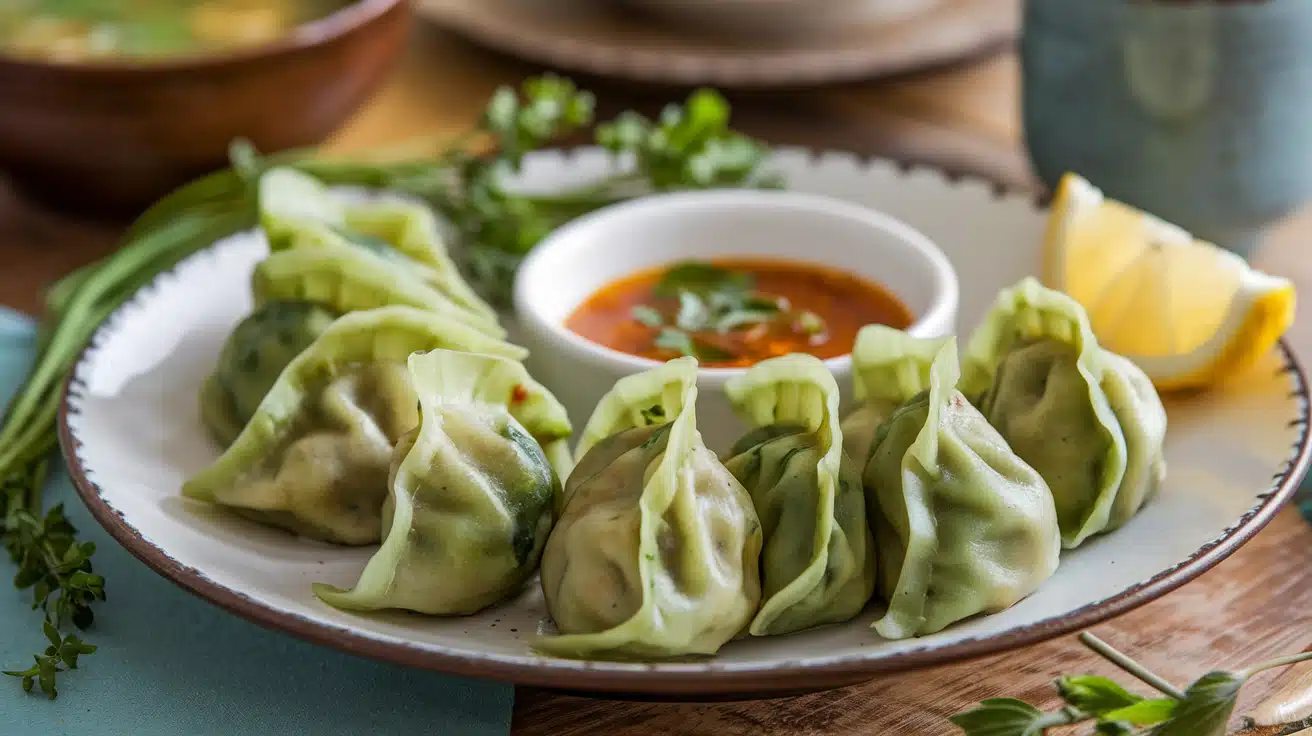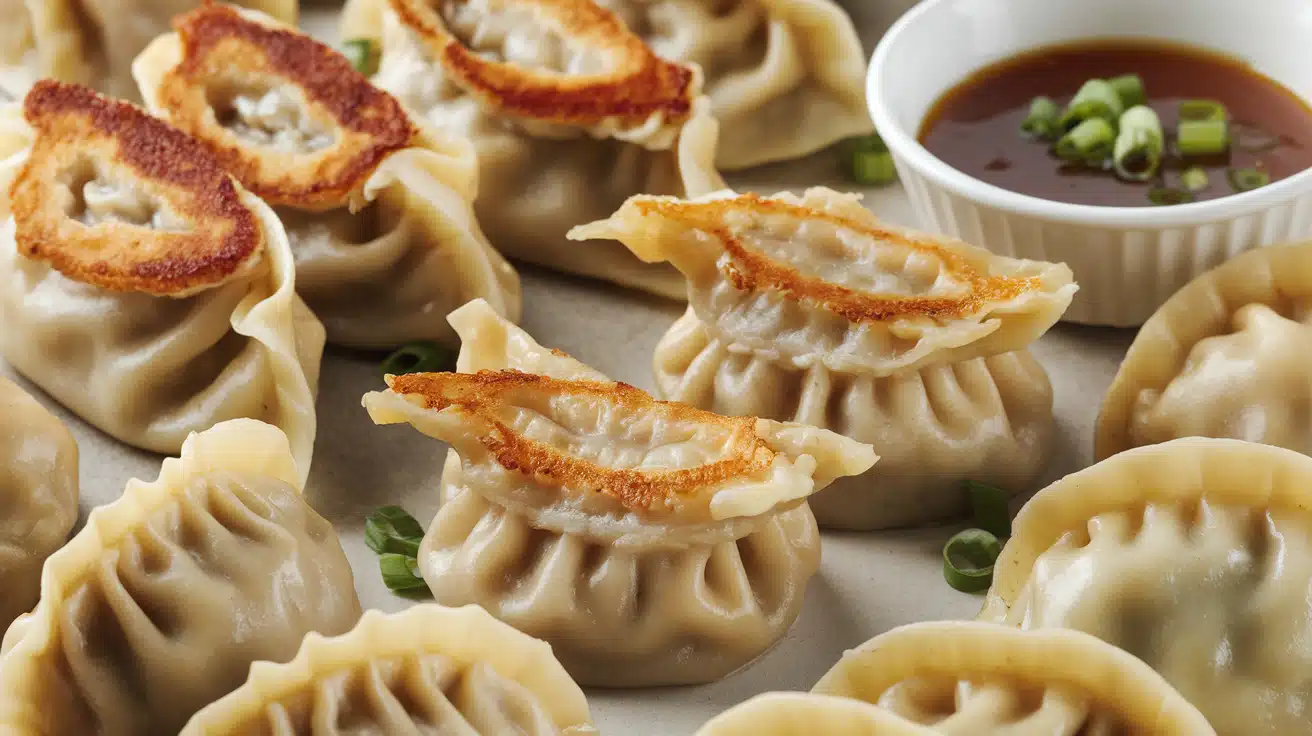Picture this: you’re meal prepping after a yoga session, and those steaming dumplings in your freezer are calling your name.
But wait, are dumplings healthy enough to fit your wellness goals?
This question resonates with fitness enthusiasts and mindful eaters everywhere. They may seem like comfort food, but they also pack a protein and vegetable punch. The real confusion starts when comparing fresh versus frozen options.
Are they healthy, and how do frozen ones compare to fresh varieties?
The answer isn’t black and white. Today, we’ll break down the science behind the nutrition of dumplings.
You’ll get evidence-based insights mixed with practical tips for mindful eating. No food shaming here, just honest facts to help you make informed choices that work for your lifestyle.
Also read:Are Croissants Healthy? Nutrition Facts and Smart Tips
Nutritional Breakdown of Dumplings
Dumplings are a comfort food loved across cultures, but their nutritional value often depends on the ingredients, portion size, and preparation method.
Examining their nutritional profile can help you understand where they fit into a well-balanced diet.
Nutrition Facts (per 100 g)
Note: The % Daily Value (DV) tells you how much a nutrient in a serving of food contributes to a daily diet. |
This breakdown shows that these are relatively high in carbohydrates and provide a moderate amount of protein, with small amounts of fat and sodium.
While they can be filling and energy-dense, pairing these with vegetables or soups can create a more balanced meal.
What Affects the Healthiness of Dumplings?
The health value of these depends on three key factors. Let’s examine each one to understand what makes some better choices than others.
Ingredients & Fillings
Your dumpling’s nutritional profile starts with what goes inside and outside:
Wrapper Choices:
- Whole wheat wrappers provide more fiber and B vitamins than refined flour versions
- Traditional white flour wrappers offer less nutritional value but better texture
- Rice paper alternatives work well for gluten-free needs
- Thicker wrappers mean more calories
Protein and Filling Options:
- Lean proteins like chicken breast, shrimp, or tofu boost nutritional value
- Vegetable-heavy fillings add vitamins, minerals, and fiber
- Pork and beef fillings provide protein but often include more saturated fat
- Mixed vegetable fillings (cabbage, carrots, mushrooms) offer antioxidants and nutrients
How Can We Cook Dumplings?
How you cook them makes a huge difference in their final calorie and fat content.
Step 1: Choose Your Cooking Method: Steaming these in a bamboo steamer or metal basket for 8-12 minutes. This method preserves nutrients and adds zero extra fat.
Step 2: Try Boiling for Simple Preparation: Drop the them into boiling water and cook for 6-10 minutes, until they float to the surface. This method also avoids the use of added oils while maintaining optimal moisture levels.
Step 3: Consider Pan-Frying Alternatives: If you prefer crispy bottoms, use a minimal amount of oil (1 teaspoon) in a non-stick pan. Add water and cover to steam the tops while crisping the bottom.
Step 4: Avoid Deep Frying: Deep frying can triple the calorie content and add unnecessary trans fats. Save this method for occasional treats only.
Portion Size & Sides
Smart portioning helps these fit into balanced meals.
Ideal serving sizes: 4-6 medium dumplings per person as a main dish, or 2-3 as an appetizer.
Pairing strategies: Serve with clear broth soup, steamed vegetables, or fresh salads to create filling, nutrient-dense meals that are low in excess calories.
Frozen vs. Fresh Dumplings: Health Comparison
The frozen versus fresh debate affects more than just taste. Your choice impacts nutrition, convenience, and even your budget.
Let’s examine how these options compare across the factors that matter most for your health and lifestyle needs.
|
Factor |
Fresh Dumplings |
Frozen Dumplings |
|
Sodium Content |
200-400mg per serving |
400-800mg per serving |
|
Preservatives |
None (when homemade) |
May contain preservatives |
|
Ingredient Control |
Complete control |
Limited to manufacturer choices |
|
Texture |
Optimal when fresh |
Can become slightly mushy |
|
Convenience |
Requires preparation time |
Ready in 10-15 minutes |
|
Cost |
Higher per serving |
More budget-friendly |
|
Shelf Life |
1-2 days refrigerated |
6-12 months frozen |
Frozen dumplings offer unmatched convenience for busy schedules. You can have a protein-rich meal ready in 15 minutes. However, most brands add extra sodium for preservation and flavor. Some also include preservatives to maintain texture after freezing.
Fresh dumplings give you complete control over ingredients and sodium levels. You choose the filling, wrapper type, and cooking method. The texture tends to be superior, with a better bite and more even moisture distribution. The downside is time investment and shorter storage life.
| How Freezing Dumplings Affects Nutrients?
Flash-freezing preserves most nutrients effectively. Vitamins A and C may decrease slightly, but protein, fiber, and mineral content remain stable. Quality frozen foods maintain 85-90% of their original nutritional value. The key is proper freezing technique. Commercial flash-freezing locks in nutrients quickly. Home-frozen foods lose more nutrients due to slower freezing and the formation of ice crystals. |
Practical Tips for Healthier Frozen Options
Not all frozen foods are created equal. Smart shopping can make a significant difference in achieving your health goals.
- Read labels carefully: Look for less than 400mg of sodium per serving. Choose options with at least 8-10gof protein. Seek whole-grain wrappers when available.
- Pick better fillings: Vegetable and lean protein combinations are the most effective. Chicken offers less saturated fat than pork. Seafood provides omega-3 benefits.
- Cook them right: Steam or boil instead of frying. Use minimal oil if you want crispy bottoms. Add fresh vegetables to boost nutrition.
- Choose quality brands: Look for brands that use natural ingredients. Avoid products with artificial colors or flavors. Higher-quality options often have better taste and nutrition.
Final Thoughts
Are dumplings healthy?
The answer depends on your choices and approach. These can easily fit into a healthy diet when you’re mindful of the ingredients, cooking methods, and portions.
Fresh dumplings win for ingredient control and optimal nutrition. Frozen options work perfectly for busy lifestyles when you choose wisely. Both can provide protein, vegetables, and satisfaction without derailing your wellness goals.
The key is balance, not perfection.
Remember, health isn’t about strict food rules or elimination diets. It’s about making informed choices that fit your life. These can be part of that balanced approach.
Ready to make healthier dumpling choices? Start by checking the labels on your favorite frozen brands, or try making fresh ones this weekend. Your taste buds and body will thank you for the mindful approach.









